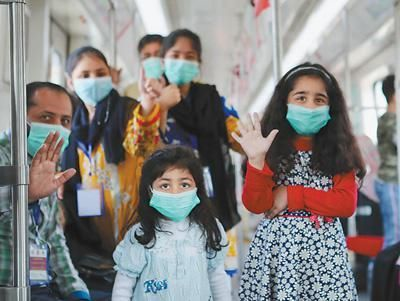
From the beginning of this year, all projects related to the China–Pakistan Economic Corridor (CPEC) have been running smoothly, giving impetus to the local fight against the COVID-19 epidemic, economic development and the protection of people’s livelihoods.
In the 1960s and 1970s, Chinese and Pakistani workers overcame difficulties and worked together to build the Karakoram Highway, the only land passage between China and Pakistan. This highway, known as the “China-Pakistan Friendship Road”, made travel much more convenient for local people.
Today, driven by the CPEC, the “China-Pakistan Friendship Road” extends southward and merges into Pakistan’s north-south traffic artery.
In July, Phase II of the Karakoram Highway project (Havellian-Thakot Section), carried out by China Communications Construction Co., Ltd., overcame the impact of the epidemic and officially opened to traffic.
More hotels and shops have appeared along the highway. Mahmood Khan, Chief Minister of Khyber Pakhtunkhwa, said that in the face of the epidemic, he was touched by how Chinese builders stuck to their posts and worked with their Pakistani colleagues to fight the epidemic.
He added that the project would create a large number of jobs and effectively improve Pakistan’s economy and people’s livelihoods.
Late at night on Sept. 23, more than 50 Chinese and Pakistani builders were still busy at the converter station camp of the ±660 kV DC transmission project from Matiari to Lahore (referred to as the Matiari-Lahore HVDC project) in the central Pakistani city of Lahore.
At about 2 in the morning, the electrified test of the first AC field was a complete success, drawing warm applause and cheers came from the main control room.
“This marks the official connection of the Matiari-Lahore HVDC project to the Pakistan power grid,” said Wang Bo, deputy chief executive of Matiari-Lahore Transmission Company of the State Grid Corporation of China.
In order to ensure the progress of the project construction, since June this year, the Chinese side has sent two groups of personnel for support and more than 200 engineers and technicians, while the medical team of the State Grid Corporation of China participated in on-site project construction, system commissioning, operation and maintenance guidance and epidemic prevention work.
The project is currently progressing smoothly, while civil construction, electrical installation and other major work has been completed in the converter stations at both ends, and the 886 km line project is about to be completed. The whole project will complete the debugging of the system in December and be put into trial operation according to schedule.

